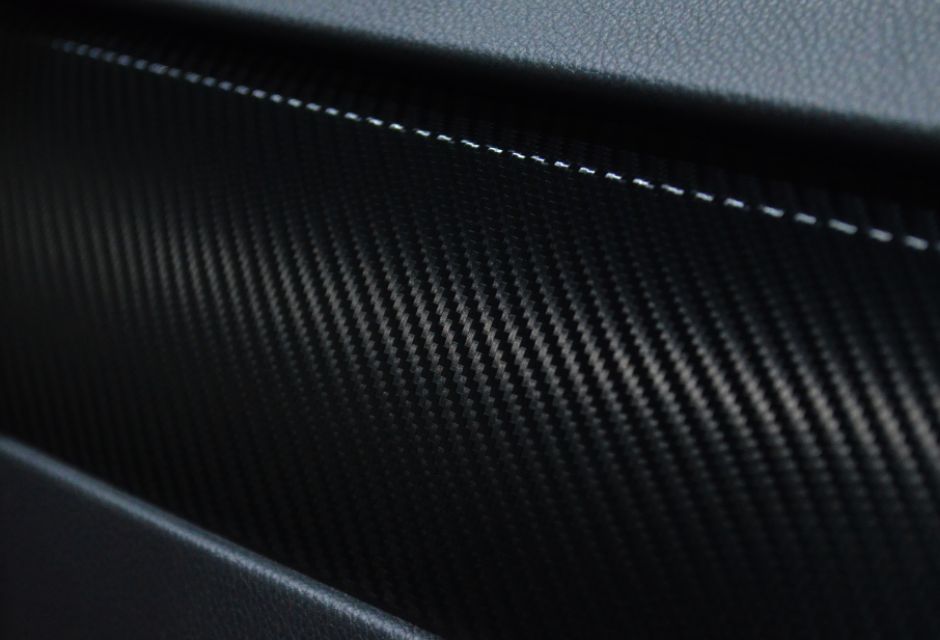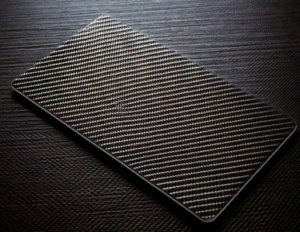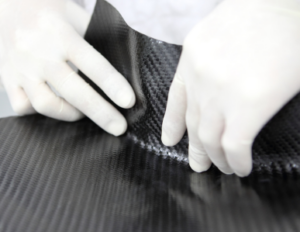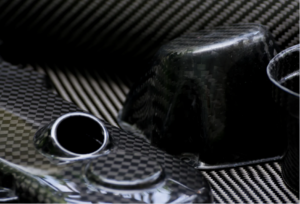
There are two types of CFRP, thermosetting CFRP and thermoplastic CFRP, depending on the type of resin used. Although thermosetting CFRP has been the mainstream in the past, in recent years, thermoplastic CFRP has been attracting more attention due to its high recyclability and moldability.
However, there are still few people who understand thermoplastic CFRP in detail. What kind of material is thermoplastic CFRP? What is the difference from thermosetting CFRP? What applications are they used for? You may have questions such as: "What kind of material is thermoplastic CFRP?
thereforeIn this article, the above information on thermoplastic CFRP will be explained in an easy-to-understand manner.
For more information about Taiga, click here.Table of Contents
What is thermoplastic CFRP?
What is thermoplastic CFRP?A type of carbon fiber reinforced plastic (CFRP) is a composite material made by solidifying carbon fibers with thermoplastic resin.
Thermoplastic CFRP has the property of softening when heated and hardening again when cooled. This property simplifies molding and reprocessing and allows for the manufacture of parts with complex geometries.
What is CFRP (Carbon Fiber Reinforced Thermoplastic Resin) anyway?
CFRP (carbon fiber reinforced thermoplastic resin) is a composite material that uses carbon fiber as a reinforcement and thermoplastic resin as a matrix (base material).
Although thermosetting resins (such as epoxy resins) are generally used for CFRP, the use of thermoplastic resins makes it a material with excellent moldability and recyclability.
Therefore, it is attracting attention in various fields as a next-generation material with new features.
Difference between thermoplastic CFRP and thermosetting CFRP
The table summarizes the differences in characteristics between thermoplastic CFRP and thermosetting CFRP.
| Thermoplastic CFRP | Thermosetting CFRP | |
| Molding Method | Softens when heated, hardens when cooled | Once cured, it does not soften even when reheated. |
| Recyclability | Easy to recycle | Difficult to recycle |
| Storage conditions | Can be stored at room temperature | May require refrigeration |
| Molding time | Short duration (seconds to minutes) | Long duration (tens of minutes to several hours) |
These characteristics are,Thermoplastic CFRP is more environmentally friendly than thermosetting CFRP and is likely to be more suitable for mass-produced products.
The characteristics of thermoplastic CFRP are explained in detail below.
Characteristics of Thermoplastic CFRP
Thermoplastic CFRP has the following four characteristics
- High impact resistance
- Low manufacturing costs
- High formability
- Recyclable
High impact resistance

Thermoplastic CFRP has superior impact resistance compared to thermosetting CFRP.
The reason for the high impact resistance of thermoplastic CFRP is the relatively free-moving structure of the thermoplastic resin molecules. This flexibility makes it easier to absorb energy upon impact, preventing cracking and fracture.
Because of its excellent impact resistance, it is used in parts such as the leading edges of the main wings of large passenger aircraft and the air intake ducts of jet engines, where impact resistance was an issue with thermosetting CFRP.
Low manufacturing costs
Low manufacturing costs are another feature of thermoplastic CFRP.
Thermoplastic CFRP has the property of softening when heated and hardening when cooled, which makes the molding process very short. Therefore, there is a large difference in manufacturing time between thermoplastic CFRP and thermosetting CFRP.
While thermosetting CFRP typically takes several hours to dozens of hours to mold, thermoplastic CFRP has a very short molding time and can be completed in tens of seconds to minutes.
The latest technology has been reported to mold thermoplastic CFRP in approximately 1 minute.
High formability
Thermoplastic CFRP has excellent flexibility and melting properties, allowing for a variety of molding methods.
For example, technologies such as "heated press molding," in which thermosetting CFRP is heated and formed into a specific shape by a press, and "composite extrusion molding," in which thermoplastic resin and carbon fiber are mixed and molded by an extruder, have been developed.
These molding methods can be used to produce complex shapes and precision parts for a wide range of applications.
Recyclable
Recyclability is another feature of thermoplastic CFRP.
Thermoplastic CFRP can be reused by crushing the waste material and re-molding it, or by melting it and separating the resin and fibers.
On the other hand, thermosetting CFRP is difficult to recycle because of its characteristic that it cannot be re-melted once cured, and requires high technology for separation and reuse.
Thermoplastic CFRP, with its recyclability features, is attracting attention as a next-generation sustainable material.
Applications of Thermoplastic CFRP
Because of its superior characteristics as described above, thermoplastic CFRP is attracting attention in various industrial fields and is used in a wide range of applications, including automotive parts, aircraft, sporting goods, and medical equipment.
Here, we will explain in detail in what specific fields thermoplastic CFRP is used.
- aircraft
- Automotive
- Industrial Equipment
aircraft

Thermoplastic CFRP is used in various parts of aircraft.
For example, it is used as a structural material for wing sections of large passenger aircraft, air intake ducts of jet engines, and aircraft brackets.
By taking advantage of the lightweight and high-strength properties of thermoplastic CFRP, it is possible to improve fuel efficiency and extend cruising range.
Highly moldable thermoplastic CFRP is also used in components such as seat frames and cabin panels to reduce weight and improve durability.
Automotive
Thermoplastic CFRP is also having a significant impact on the automotive industry.
Teijin, a general chemical manufacturer, announced in 2011 that it had established mass production technology for molding carbon fiber-reinforced plastic (CFRP) in less than one minute, and in 2018, the world's first mass-produced car was launched using thermoplastic CFRP developed by Teijin.
Thermoplastic CFRP is expected to reduce manufacturing costs and environmental impact due to its ease of reprocessing after molding and recyclability.
In particular, thermoplastic CFRP is being used in EV battery cases and car body parts.
Industrial Equipment

Thermoplastic CFRP is also attracting attention in fields such as energy equipment and the building materials civil engineering industry.Much of this is aimed at reducing maintenance costs and environmental impact.
In energy equipment, CFRP is expected to reduce weight and improve power generation efficiency, and is used in wind power generation blades in particular. In the building materials and civil engineering industries, thermoplastic CFRP is used as earthquake-resistant reinforcement and structural materials.
Summary
In this article, we have described in detail the characteristics and uses of thermoplastic CFRP.
The use of thermoplastic CFRP is attracting attention in the manufacturing, construction, and energy industries because of its potential to reduce manufacturing costs and environmental impact.
Thermoplastic CFRP plays an important role in supporting modern industry through efficient and high-quality production, and further development is expected in the future.
Taiga" service ideal for high-mix low-volume production
We offer state-of-the-art technology in a wide variety of fields, including sheet metal fabrication, CNC milling, laser machining, turning, cutting, and 3D printing.
Our experienced engineers propose optimal solutions in the design and manufacture of complex shapes and new parts, and support our customers' manufacturing with reliable quality.
If you are considering manufacturing parts utilizing CFRP, please contact us!Taiga."Taiga is a free service that allows you to consult with experienced contractors.
We can efficiently proceed with the development of difficult or new parts, small-lot production, prototyping, and mass production while keeping costs low.
For more information about Taiga, click here.
 0120-987-742
0120-987-742


